
Grow Green: Tips and Advice for Gardening With Intention
by
Jen Chillingsworth
Published 31 Mar 2021
If the soil is completely dry, water each plant with a teaspoon of water Eight houseplants to reduce indoor air pollution * * * Houseplants are the superheroes in our homes. They have the power to reduce levels of indoor air pollution, eliminating toxins such as benzene, formaldehyde and trichloroethylene from the air. These are commonly found in furniture, paint, cleaning products, plastic and carpets. Long-term exposure can cause respiratory problems, severe headaches and dizziness, so include a few houseplants in your home to provide cleaner, healthier air. The houseplants listed here are all easy to care for and good for reducing indoor air pollution. SNAKE PLANT (Sansavieria trifasciata/Mother-in-law’s tongue) Slow growing and one of the best plants for improving indoor air pollution.
…
SNAKE PLANT (Sansavieria trifasciata/Mother-in-law’s tongue) Slow growing and one of the best plants for improving indoor air pollution. Prefers bright light but can handle some shade too. Snake plant like to have its roots crowded, so choose a tight-fitting container. Use a good quality cactus compost and feed once a month from spring to autumn. Water sparingly in autumn and winter. Propagate from leaf cuttings. DEVIL’S IVY (Epipremnum aureum/Golden Pothos) Trailing vine suitable for hanging planters or it can be trained to grow up a moss pole. Ideal for rooms with high levels of moisture like kitchens and bathrooms, it needs occasional misting if located elsewhere.

Power Hungry: The Myths of "Green" Energy and the Real Fuels of the Future
by
Robert Bryce
Published 26 Apr 2011
And, to be more specific, it would be the millions of young children and women who are sickened or who die prematurely every year from indoor air pollution caused by the burning of biomass. In 2007, the World Health Organization estimated that indoor air pollution was killing about 500,000 people in India every year, most of them women and children. The agency also found that air pollution levels in some kitchens in rural India were thirty times higher than recommended and that the pollution was six times as bad as that found in New Delhi. Worldwide, as many as 1.6 million people per year are dying premature deaths due to indoor air pollution.17 About 37 percent of the world’s population relies on solid fuels, such as straw, wood, dung, or coal, to cook their meals.18 These low-quality fuels, combined with inadequate ventilation when the cooking is done inside, often results in the living areas being filled with a variety of noxious pollutants, including soot particles, carbon monoxide, benzene, formaldehyde, and even dioxin.19 Continued exposure to polluted indoor air can result in numerous illnesses, ranging from relatively minor problems such as headaches and eye irritation to deadly conditions such as asthma, pneumonia, blindness, lung cancer, tuberculosis, and low birth weight in children born to mothers who were exposed to indoor air pollution during pregnancy.20 Despite these numbers, the problem of indoor air pollution doesn’t get nearly as much attention as other public health issues, such as vaccination or safe drinking water.
…
Worldwide, as many as 1.6 million people per year are dying premature deaths due to indoor air pollution.17 About 37 percent of the world’s population relies on solid fuels, such as straw, wood, dung, or coal, to cook their meals.18 These low-quality fuels, combined with inadequate ventilation when the cooking is done inside, often results in the living areas being filled with a variety of noxious pollutants, including soot particles, carbon monoxide, benzene, formaldehyde, and even dioxin.19 Continued exposure to polluted indoor air can result in numerous illnesses, ranging from relatively minor problems such as headaches and eye irritation to deadly conditions such as asthma, pneumonia, blindness, lung cancer, tuberculosis, and low birth weight in children born to mothers who were exposed to indoor air pollution during pregnancy.20 Despite these numbers, the problem of indoor air pollution doesn’t get nearly as much attention as other public health issues, such as vaccination or safe drinking water. One of the most passionate voices proclaiming the need for more hydrocarbon use among the world’s poor is that of Kirk R. Smith, a professor of global environmental health at the University of California, Berkeley.21 In 2002, Smith wrote a piece for Science magazine entitled “In Praise of Petroleum?”
…
For more information, see Gorillacd.org. 14 Tom Knudson, “The Cost of the Biofuel Boom on Indonesia’s Forests,” The Guardian, January 21, 2009, http://www.guardian.co.uk/environment/2009/jan/21/network-biofuels. 15 Ibid. 16 Ibid. 17 Kounteya Sinha, “‘Indoor’ Air Pollution Is the Biggest Killer,” Times of India, March 22, 2007, http://timesofindia.indiatimes.com/articleshow/1790711.cms. 18 Fatih Birol, “Energy Economics: A Place for Energy Poverty in the Agenda?” The Energy Journal 28, no. 3 (2007): 3, 4. 19 Kirk R. Smith, “Wood: The Fuel That Warms You Thrice,” Human Health and Forests (2008): 99, http://ehs.sph.berkeley.edu/krsmith/publications/2008%20pubs/Colfer%20book%20chapter.pdf. 20 Sinha, “‘Indoor’ Air Pollution.” 21 “Viewpoints: An Interview with Professor Kirk R. Smith.” 22 Kirk R.

The Cigarette: A Political History
by
Sarah Milov
Published 1 Oct 2019
James Repace, Enemy No. 1:Waging the War on Secondhand Smoke (Amazon: Repace Associates, Inc., 2019), 32–40; James B. Sullivan, “Working with Citizens’ Groups,” Physics Today 27, No. 6 (June 1974): 32–37. 79. Repace, Enemy No. 1, 36–39. 80. Ibid., 50–59. 81. James Repace and Alfred Lowrey, “Indoor Air Pollution, Tobacco Smoke, and Public Health,” Science 208, (May 2, 1980): 471. 82. “Tobacco Smoke: An Occupational Health Hazard,” n.d., Folder 1, Carton 2, Shimp Papers, UCSF. 83. Repace and Lowrey, “Indoor Air Pollution, Tobacco Smoke, and Public Health,” 471. 84. Richard Kluger, Ashes to Ashes: America’s Hundred-Year Cigarette War, the Public Health, and the Unabashed Triumph of Philip Morris (New York: Knopf, 1996), 496. 85.
…
Derthick, Up in Smoke, 110–114. 5. James Repace and Alfred Lowrey, “Indoor Air Pollution, Tobacco Smoke, and Public Health,” Science 208 (1980): 464–472; Repace and Lowrey, “A Quantitative Estimate of Nonsmokers’ Lung Cancer Risk from Passive Smoking,” Environment International 11, No. 1 (1985): 3–22; National Research Council, Environmental Tobacco Smoke: Measuring Exposures and Assessing Health Effects (Washington, DC: National Academy Press, 1986); J. M. Samet, M. C. Marbury, and J. D. Spengler, “Health Effects and Sources of Indoor Air Pollution,” American Review of Respiratory Disease 136, No. 6 (1987): 1486–1506; A.
…
The EPA eventually refused to approve the sewage incinerator on the banks of the Potomac.78 Repace’s success in marshaling his professional expertise to thwart the incinerator siting made him an in-demand expert for citizens’ groups opposing incinerators across the D.C. area.79 That is, Repace became a NIMBY (“Not In My Back Yard”) specialist. After a meeting with a Maryland citizens’ group, an audience member encouraged Repace to turn his technical skills to the question of indoor air pollution. By Repace’s calculations, tobacco smoke in enclosed environments would exceed EPA-permissible air quality standards. Fortuitously, Repace’s attention to the issue conceded with Jesse Steinfeld’s political demise. Once out of office, Steinfeld organized a conference on nonsmokers’ rights at a Baltimore community college.
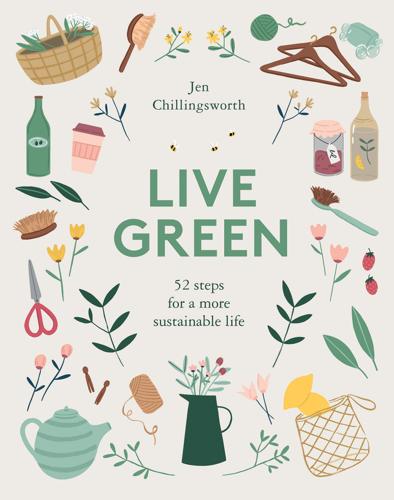
Live Green: 52 Steps for a More Sustainable Life
by
Jen Chillingsworth
Published 19 Feb 2019
Some of them have carcinogenic properties and they also cause harm to the environment, which is why their use in paint is strictly controlled by legislation. Most brands now offer low-VOC paints for indoor projects, but they often still contain other nasties like ammonia, formaldehyde and acrylic softeners – all major sources of indoor air pollution. Switch to green alternatives: * * * PAINT FOR WALLS Many eco paints are virtually free from VOCs, are breathable and are great for rooms like kitchens and bathrooms as they are formulated to help reduce condensation, mould and mildew. However, not all are washable, so in time you will probably have to touch up areas that get dirty.
…
Scenting the home naturally We like our homes to smell welcoming, but this can mean masking the aromas of cooking or the whiff of pets. Many of us reach for air freshener sprays, plug-ins or scented candles, yet they are full of chemicals that harm the environment and release toxins into the air in our home. Aim to open your windows once a day to let some fresh air in and help to counteract indoor air pollution. Choosing candles * * * Most scented candles are made from paraffin wax (also known as mineral wax). A petroleum waste product, paraffin is bleached, synthetically coloured and fragranced to make a scented candle. When it’s burning, the fumes released are comparable with those from a diesel engine and are especially harmful to anyone who suffers with asthma and other respiratory problems.
…
These products work by temporarily blocking the pores to prevent the body from sweating and typically contain some nasty ingredients – aluminium, phthalates, propylene glycol and parabens. Spray versions also release potentially harmful VOCs (see Green decorating), which significantly contribute to indoor air pollution. Switching to a natural deodorant is the answer – no nasty chemicals are used, and no harmful VOCs are released into the air. However, many people struggle to find the right product that works for them, and it can take several attempts until you find one that does. I tried a few before I finally found one that suited me.

Green Interior Design
by
Lori Dennis
Published 14 Aug 2020
A home is thought to be a haven, but if it is flooded with toxic materials, it’s not exactly the idyllic retreat we imagine. Typically, the wood, plastic, and fabric in most furniture is made or finished with toxic materials, so the furnishings selected to make a space livable actually create indoor air pollution that is harmful to human life. Toxic chemicals and organic pollutants used in paints, paint strippers, and wood preservatives routinely applied to household furnishings are suspected to cause cancer in humans and animals. Formaldehyde, a known indoor pollutant, is used as an adhesive in most residential wood furniture.
…
Candlelight can be a soothing and wonderful way to create a mood, but most candles are toxic when they’re burned, releasing harmful chemicals into the air. Most candles are made from petroleum by-products and contain benzene and toluene, both known carcinogens. Artificially scented candles may contain phthalates. Once these paraffin candles are burned, they release these chemicals and add to indoor air pollution. Soy or beeswax candles burn longer and cleaner. Soy wax spills are easier to clean compared to paraffin candle wax, which stains fabric and carpets. Soy candles also act as a diffuser because they burn slower, allowing for a cooler flame near the oil. When the oil is not burned, it diffuses around the room more evenly.
…
Jennair, Bosch, Wolf, and Viking offer induction cooktops. GE has a free-standing model with a convection oven on the bottom. When specifying outdoor barbeques, chose electric, propane, or natural gas instead of charcoal or wood briquettes. HOODS Using ventilation hoods while cooking helps to eliminate indoor air pollution caused by smoke and food particles. Selecting an Energy Star–rated model will help ensure that there is less noise and energy usage generated. They also feature high-performance motors and improved blade design, which provides better performance and lengthens the life of the appliance. MICROWAVES The reviews are mixed on microwaves.
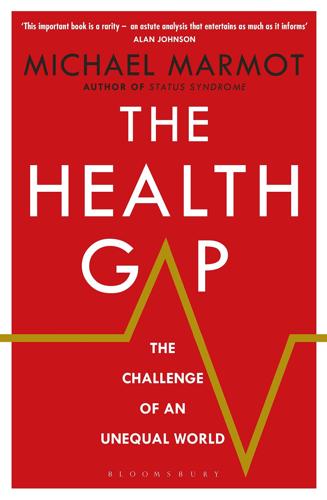
The Health Gap: The Challenge of an Unequal World
by
Michael Marmot
Published 9 Sep 2015
Childhood underweight, which makes children more vulnerable to infection, comes in at rank 8, after high body mass index, i.e. overweight. Today, considering all countries, high-, middle- and low-income, the major diseases affecting people are similar – so-called non-communicable diseases: heart disease, lung disease – note the importance of indoor air pollution, a cause of chronic lung disease in low-income countries – cancers, diabetes. AIDS, Ebola, TB and malaria remind us that there is still a long distance to go in eradicating major infectious disease epidemics. That said, already in middle-income countries, and increasingly in low-income countries, the causes of suffering and death are similar to those in high-income countries.
…
The pharmaceutical industry may not like me for saying it, but my preference is for seeing how we could deal with the causes of high blood pressure, high cholesterol and high blood sugar, rather than simply wait for them to get raised and then treat. Third, and related to the last point, there is no social analysis. Overwhelmingly, most of these risk factors are related to people’s social circumstances. We might call these the ‘causes of the causes’. Diet, indoor air pollution and high blood pressure are potent causes of disease globally. We need to ask why, increasingly, these risk factors are linked to social disadvantage. Remember the discussion of maternal mortality? We may call lack of access to medical care a cause of a mother dying in childbirth. We need to look at the causes of lack of access – the causes of the causes.
…
In addition to the physical burden of carrying wood or manure, they are at increased risk of sexual violence. Cooking over open fires, and indoors in smoky badly ventilated dwellings, is also bad for health. The World Health Organisation estimates that in 2012, globally, 4.3 million deaths were attributable to indoor air pollution, almost all of them in low- and middle-income countries. We have, then, a significant contributor to health inequities between countries. The pity of this problem is that it is soluble, and quickly. Global poverty is soluble too, but will take a little longer. The Global Alliance for Clean Cookstoves is one among many organisations that are committed to helping hundreds of millions of families escape the unnecessary toil of having no cooking stove or only a rudimentary one.
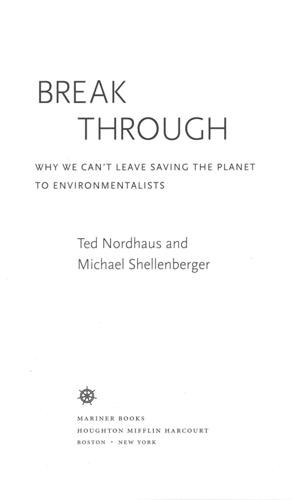
Break Through: Why We Can't Leave Saving the Planet to Environmentalists
by
Michael Shellenberger
and
Ted Nordhaus
Published 10 Mar 2009
Their research was consistent with the results of other studies, which found asthma to be caused by many factors not just air pollution, from breathing secondhand smoke to breathing indoor air pollution to emotional and physical stress to the lack of health care. The Harlem study found that children with asthma are 50 percent more likely to live with someone who smokes than nonasthmatic children. They discovered that the causes were themselves overdetermined: there are causes within causes. Indoor air pollution is caused by everything from cockroach feces to mold to dust mites. And even those parents who get medical care for their children often do not understand their children’s condition well enough to help them take their medication properly.
…
See also environmental justice groups asthma rates and, 77–78 lifestyle factors and, 72–75 outcomes and, 82–83, 86–88, 178 pollution and, 66–72, 74–75 health insurance, 177–78, 181–83 Heidegger, Martin, 326 (n42) Hill, Julia Butterfly, 144 Holmes, Oliver Wendell, Jr., 218 human nature, 101–3, 145–48, 150–54 Hussein, Saddam, 243 hybrid vehicles, 125 I Icarus, myth of, 271 ideological constructs, 230–32 nature vs. market and, 232–35 new politics and, 239 “I have a dream” (King speech), 1–4, 17–18 immigration, attitudes toward, 168–69 immiseration theory, 36 Inconvenient Truth, An (Gore film), 11–13, 25, 105–9, 116, 125 India, 121, 149. See also economic development individualism. See American character; self-creation, freedom for Indonesia, 279 (n13) indoor air pollution, 79, 297 (n36) infrastructure development in Brazil, 47, 49, 54–55, 297 (n43) clean energy development and, 123–24 Inglehart, Ronald, 280 (n7), 282 (n11), 282 (n13) inner-directed (fulfillment) needs, 28, 162, 164, 282 (n12) insecure affluence. See also status insecurity ecological programs and, 39–40 lack of new social contract and, 175–80 late 1990s social transformations and, 171–75 moral values and, 184–85 origins of, 14–15, 160, 165–67 prosperity since 1993 and, 167–69 Inslee, Jay, 229, 257 interest-based advocacy.

Jaws
by
Sandra Kahn,Paul R. Ehrlich
Published 15 Jan 2018
Toxicologic pathology 34: 252–269. 16. Personal communication, February 11, 2016. 17. R. Dales, L. Liu, and A. J. Wheeler. 2008. Quality of indoor residential air and health. Canadian Medical Association Journal 179: 147–152. 18. J. M. Samet, M. C. Marbury, and J. D. Spengler. 1988. Health effects and sources of indoor air pollution. Part II. American Review of Respiratory Disease 137: 221–242. 19. M. Garrett, M. Hooper, B. Hooper, P. Rayment, and M. Abramson. 1999. Increased risk of allergy in children due to formaldehyde exposure in homes. Allergy 54: 330–337. 20. J. L. Sublet, J. Seltzer, R. Burkhead, P. B. Williams, H.
…
DiLorenzo, and J. H. Bovbjerg. 2003. Family and friends with disease: Their impact on perceived risk. Preventive Medicine 37: 242–249. 25. J. A. Bernstein, N. Alexis, H. Bacchus, I. L. Bernstein, P. Fritz, E. Horner, N. Li, S. Mason, A. Nel, and J. Oullette. 2008. The health effects of nonindustrial indoor air pollution. Journal of Allergy and Clinical Immunology 121: 585–591. 26. P. R. Ehrlich and J. Harte. 2015a. Food security requires a new revolution. International Journal of Environmental Studies: 1–13. Available at http://dx.doi.org/10.1080/00207233.2015.1067468; and P. R. Ehrlich and J. Harte. 2015b.
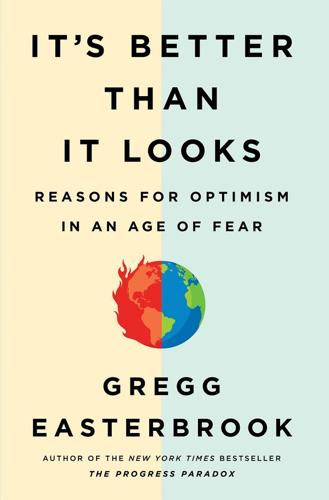
It's Better Than It Looks: Reasons for Optimism in an Age of Fear
by
Gregg Easterbrook
Published 20 Feb 2018
Air in China, India, and parts of the developing world is dangerously polluted; across the contemporary globe it is the poor nations that are the polluted ones, not the advanced industrial regions. In poor nations, indoor air pollution—caused by burning wood, coal, or agricultural wastes for heating and cooking—may be worse than outdoor air pollution. The World Health Organization estimates that indoor air pollution causes 4.3 million deaths annually in the developing world; by contrast, outdoor air pollution causes little if any mortality in the United States and European Union. Indoor cooking smoke in the developing world is far more harmful to the human family than conjectured super-plagues.
…
In 1900, some 80 percent of Americans were employed at manual or semiskilled labor: Theodore Caplow et al., The First Measured Century (Washington, DC: AEI Press, 2000). Chicago has invested about $4 billion in a deep-tunnel system: Trevor English, “Chicago Deep Tunnel Project,” Interesting Engineering, May 21, 2016. The World Health Organization estimates that indoor air pollution causes 4.3 million deaths: “Clean Household Energy for Health, Sustainable Development, and Wellbeing of Women and Children” (Geneva: World Health Organization, 2016). Today the typical man in the Netherlands is five-foot-eleven: Max Roser, “Human Height,” https://ourworldindata.org/human-height/.

30 Days to a Clean and Organized House
by
Katie Berry
Published 13 May 2014
That doesn't mean you have to repeat the plan over and over. Instead, use the Monthly Cleaning Routine to keep chaos away. You can always refer back to the Plan when you want to -- say, for Spring Cleaning -- but if you keep up with the Monthly Cleaning Routine you'll probably find you don't need to. HOMEMADE CLEANING MIXES Indoor air pollution is a very real concern, particularly in newer homes which are built to prevent outdoor (fresh) air from seeping inside. Quite literally everything you cook or burn, spray or wipe, wash or clean with in your home becomes part of the air you breathe. For that reason, it's important to think about the products you use.
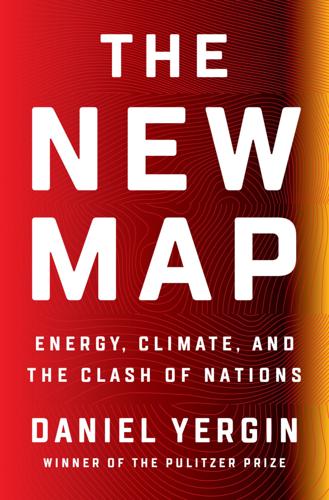
The New Map: Energy, Climate, and the Clash of Nations
by
Daniel Yergin
Published 14 Sep 2020
Many, many things are not being taken into account with all the talk about renewables and electric vehicles.” What those like Sylva see as not taken into account is that three billion people, almost 40 percent of the world’s population—what the World Health Organization (WHO) calls “the forgotten 3 billion”—are subject to indoor air pollution caused by these poor fuels, which the WHO calls “the greatest environmental health risk in the world today.” Close to four million people a year die from this indoor pollution, and many more suffer from a wide variety of illnesses. For children, it can mean stunted development.1 India, with almost 20 percent of the world’s population—soon to be the most populous country in the world—is a case study for the challenges of the developing world.
…
Workers assemble solar cells in a factory in China, which supplies 70 percent of the world’s solar cells. Almost three billion people do not have access to commercial energy, but instead depend upon gathering wood and crop and animal waste for cooking and heating. The resulting indoor air pollution, says the World Health Organization, is “the greatest environmental health risk in the world today.” Offshore is the new frontier for wind power. Here a supply ship services one of the 150 turbines in the Gemini Wind Park, which covers twenty-six square miles off the Netherlands’ coast.
…
See also shareholder activism Doha, Qatar, 278–79 Donbas region, 79 Donilon, Thomas, 59 Dow, 29–30 drone technology, 251–52, 286 Drucker, Peter, 162 Dutch East Indies, 140 Dyukov, Alexander, 76 Eagle Ford Shale, 17, 24, 24, 42, 55 Earth Justice, 51 earthquakes, 28 East Asia, 33 East China Sea, 148 Eastern Europe, 88, 109 Eastern Mediterranean energy reserves, 253–58 East Turkistan Islamic Movement, 180 Eberstadt, Nicholas, 132 Ebola epidemic, 315 “economic miracle” countries, 33, 74–75 Economic Survey (India), 408 Economist, The, 276, 286, 307–8 Edison, Thomas, 329 Egypt and Arab nationalism, 203–5, 214 and Arab Spring protests, 237–38 and Eastern Mediterranean petroleum resources, 254, 256–57 and historical context of Middle East conflicts, 196 and Iranian Revolution, 209 and Islamic fundamentalism, 259–63, 264, 270 and Qatar, 306 and Syrian civil war, 251 Einstein, Albert, 394–95 election interference, 70, 78, 81, 103–4 electric power and infrastructure, xix, 12–13, 184, 186, 234, 345–46, 404 electric vehicles (EVs), xviii, 327–46, 368–71, 415, 427, 428, 430 embassy bombings in Kenya and Tanzania (1998), 264–65 emissions standards, 335–37, 339, 346 Energiewende (“energy turn”), 86–87, 395–96 energy security and independence and Canadian imports to U.S., 47 and China’s development of petroleum resources, 160 and current geopolitical challenges, 427 and Eastern Mediterranean petroleum resources, 254–57 and electric vehicles, 341 and energy transition in the developing world, 408–9 and energy transition in U.S., xv and gas supplies to Europe, 84–89 and Nixon administration, 53 and opposition to Russian gas exports, 109 and politics of U.S. shale production, 55 and Russia-Europe relations, 83 and South China Sea tensions, 171 and varied approaches to climate change, 412–13 “energy superpower” status, xv, 57, 70–71 Energy Transfer Partners, 49, 51 energy transition and breakthrough energy technologies, 403–6 and carbon capture technology, 419 and current global challenges, xiii–xx, 427–29 and developing world, 407–10 emerging consensus on climate issues, 382–87 and “green deal” proposals, 388–91, 391–93 historical perspective on, 377–79 and IPCC, 379–80 and Paris climate agreement, 380–82 and push for renewable energy sources, 394, 400–401 and U.S. position, xv and varied approaches to climate change, 412 Eni, 256 environmental issues and activism and American shale gas reserves, 113 and Fukushima nuclear disaster, 87 and global power politics, xiii and hydraulic fracturing, 28–29 and indoor air pollution in developing countries, 407–8 and opposition to pipeline projects, 46–51 and U.S. transition to LNG exporter, 37 See also carbon emissions; climate change Environmental Defense Fund, 28–29 EOG, 14–17 Erbil, Kurdistan, 232 Erdoğan, Recep Tayyip, 247, 305, 315 ESPO pipeline, 118 Estonia, 69 EU Council, 102 Eurasian Economic Union, 92, 93, 189 Europe and China Belt and Road Initiative, 182, 184 and Eastern Mediterranean petroleum resources, 258 and impact of U.S. shale and LNG, 38, 55, 61–62 and push for renewable energy sources, 398–99 See also European Union (EU); specific countries European Central Bank, 187 European Commission, 388–90 European Union (EU) and energy security issues in Europe, 85–88 and energy transition challenges, 381 and “green deal” proposals, 388–91 and Nord Stream 2 pipeline, 102, 104, 108–9 and Russian annexation of Crimea, 95 and Russian gas supplies to Europe, 85 and Russian geopolitical ambitions, 70, 115 and Russia-Ukraine tensions, 93 and Syrian refugees, 248 Exclusive Economic Zones (EEZs) and territorial waters, 142–45, 148, 159, 170, 257 extraterritoriality, 108, 139 ExxonMobil, 15, 65, 76, 395 Fabius, Laurent, 381 Fahd bin Abdulaziz Al Saud, 214 Faisal I, King of Iraq, 198–200, 202–3 Falcon rockets, 332 Farouk I, King of Egypt, 203 Federal Bureau of Investigation (FBI), 103 financial crisis of 2008, 26–27, 333, 429 Financial Stability Board, 385 Financial Times, 113, 273 financing for energy projects and China Belt and Road Initiative, 182–83 and “green recovery” proposals, 428 and push for renewable energy sources, 397, 400–401 and Russian interests in Central Asia, 125–26 and Russian LNG, 112 Fink, Larry, 385 First Opium War, 139 First Sino-Japanese War, 154 5G technology, 175, 354 “flight shaming,” 387, 415 Ford, Bill (and Ford Motor Company), 329, 338, 346, 351, 369–70, 373 Ford, Henry, 372–73 Fort Laramie Treaty, 49 Fracking Debate, The (Raimi), 28 France, 138, 195–96, 201–2, 227, 232, 247, 343 Freeport LNG facility, 24, 35–37, 38 Free Syrian Army (FSA), 244 Fukushima nuclear accident, 63, 87, 401, 430 G7, 129 G8, 129 G20, 129, 280, 319–20, 388, 426 Gadhafi, Muammar, 239 Gadkari, Nitin, 342 Gaidar, Yegor, 73 gasoline and Auto-Tech advances, 368, 370–72 and “clean diesel,” 335 and consumer behaviors, 421 Mexican imports, 41, 43 and oil embargo of 1973, 53–54 and oil price war, 316–17, 323 and pipeline battles in U.S., 47 Gates, Bill, 315, 385–86 Gates, Robert, 237–38 Gaza, 253 Gazprom, 76, 80, 86, 89, 105, 107–8, 109, 125 Geely, 338 General Motors, 171, 329, 333–34, 369 Georges-Picot, François, 194–95, 196–98, 201–2 Georgia (country), 82 Germany and “clean diesel,” 336 economic growth before World War I, 132 and energy security issues in Europe, 86–88 and energy transition challenges, xix and global order after First World War, 200 and Iranian nuclear ambitions, 223, 227 and Khashoggi affair, 305–6 and Nord Stream 2 pipeline, 102, 104–5, 107–8 and push for renewable energy sources, 395–96, 400–401 and Russia’s “pivot to the east,” 117 and Syrian refugees, 248 and the Thucydides Trap, 131, 154 and U.S.
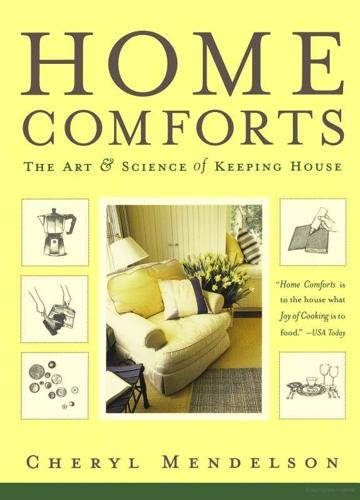
Home Comforts: The Art and Science of Keeping House
by
Cheryl Mendelson
Published 4 Nov 1999
CLEANLINESS The Air in Your Castle Effects of inadequate ventilation, signs of inadequate ventilation, desirable levels of ventilation … Desirable indoor temperatures, indoor and outdoor methods of cooling using air conditioners, shade trees, awnings, window shades, blinds, solar shades and screens, and other means … Desirable indoor humidity levels, effects of excess and insufficient humidity … How to measure and control indoor humidity … Indoor air pollution caused by household chemicals used for cleaning and other purposes, chemicals used in hobbies and work, pesticides, ozone, formaldehyde, asbestos, radon, lead, off-gassing and fumes produced by fabrics and carpets, microorganisms, house dust … Indoor pollution caused by furnaces, stoves, heaters, and fireplaces; combustion by-products, carbon monoxide; unvented heaters, wood stoves, gas stoves … Tobacco smoke … Air-cleaning devices such as filters and air-cleaning machines; effect of houseplants Dr.
…
Because all that fresh air requires heating in winter, those who have high air-exchange rates (the rates at which outside air replaces indoor air) have heating bills to match. By having your house weatherized and tightened, you can significantly decrease both. (You can never render a home completely airtight.) But indoor air pollution increases—and available oxygen decreases—as the air-exchange rate goes down. Thus, although weatherizing usually allows enough fresh air to enter for adequate ventilation, and weatherizing your home is almost always safe and beneficial, authorities recommend against tightening homes with inadequate ventilation or specific pollution problems such as unvented gas cooking stoves, unvented heating stoves, potential radon accumulations, or urea-formaldehyde foam insulation or other significant formaldehyde-emitting sources.
…
Home centers and hardware stores sell bags of absorbent crystals you can hang in closets or other problem areas. A lightbulb left burning in a damp closet will help dry it out. But don’t create a fire hazard; be sure nothing is left touching or near the bulb. Exhaust fans vented to the outdoors effectively remove excess humidity and indoor air pollutants in bathrooms and kitchens. Every home should have these, but many do not. Ventilating or placing moisture barriers in crawl spaces, basements, and attics can prevent excessive humidity buildup. Dehumidifiers are said to help significantly anywhere in the home, including the basement. Like most other air-treating machines, dehumidifiers have trays that must be emptied and cleaned at recommended intervals to prevent molds and microorganisms from growing.

Invention: A Life
by
James Dyson
Published 6 Sep 2021
This uses our Cryptomic technology through which formaldehyde particles are captured by a catalyst and broken down into tiny amounts of harmless water and CO2. Cryptomelane is characterized by billions of atom-sized tunnels with the ability to destroy formaldehyde. People spend the majority of their day inside, and indoor air pollution can be up to five times worse than the outdoor kind. The Dyson Pure Hot + Cool purifier cleanses the air of pollutants and even tells you what these are in a real-time display both on the machine and in your app. Formaldehyde is released from many sources inside the home, including furniture, paint, wood floors, scented candles, cooking, cleaning products, decorating products, and plants, presenting considerable concern, particularly in China, where it is seen as a cause not just of skin irritation and conditions like asthma but of certain cancers, too.
…
As with other people in Southeast Asia, the Chinese are particularly keen on air purifiers. This is not as many might assume because the pollution levels are higher than anywhere else in the world. Rather, it is because they are educated to be acutely aware of the dangers. They are much better informed about the dangers of indoor air pollution, with the effects of formaldehyde and other VOCs registering high in their consciousness. Quite right, too. Other countries have yet to catch up. When we developed air purifiers, these had to perform to a very high standard to meet local expectations. Where British companies used to create products for export markets at home, today we are living and working in those markets, viscerally aware of what people might want, working in direct collaboration with them on research, development, and production.

Simple Matters: Living With Less and Ending Up With More
by
Erin Boyle
Published 12 Jan 2016
Chapter 06: Getting Dressed 1 Elizabeth Cline, Overdressed (New York: Penguin, 2012), 102. 2 Cline, Overdressed, 5. 3 Cline, Overdressed, 5. Chapter 08: Cleaning 1 “Take Out Toxics,” Natural Resources Defense Council, http://www.nrdc.org/health/toxics.asp Chapter 09: Thriving 1 “Interior Landscape Plants for Indoor Air Pollution Abatement” (report, NASA, September 15, 1989), B.C. Wolverton, Anne Johnson, and Keith Bounds, http://ntrs.nasa.gov/archive/nasa/casi.ntrs.nasa.gov/19930073077.pdf. Further Reading: Simplicity Parenting: Using the Extraordinary Power of Less to Raise Calmer, Happier, and More Secure Kids by Kim John Payne Family Herbal: A Guide to Living Life with Energy, Health, and Vitality by Rosemary Gladstar Herbs for Natural Beauty by Rosemary Gladstar Make Your Place: Affordable, Sustainable Nesting Skills by Raleigh Briggs The Home Apothecary: Cold Spring Apothecary’s Cookbook of Hand-crafted Remedies and Recipes for the Hair, Skin, Body, and Home by Stacey Dugliss-Wesselman The Naturally Clean Home by Karyn Siegel-Maier The Omnivore’s Dilemma by Michael Pollan Skin Cleanse by Adina Grigore For more of my thoughts on simple living, visit my blog, Reading My Tea Leaves (www.readingmytealeaves.com).

Business Lessons From a Radical Industrialist
by
Ray C. Anderson
Published 28 Mar 2011
Here’s what we found coming from them: • carbon monoxide, generated by the incomplete burning of fossil fuels; • carbon dioxide, the greenhouse gas that helps make Venus an oven; • sulfur dioxide, the poisonous precursor to acid rain; • nitrous oxides, potent greenhouse gases in their own right that react with volatile organic compounds and hydrocarbons on hot, humid days to create ground-level ozone (the bad ozone) and smog, and also contribute to acid rain; • particulate matter, tiny specks of “ash” ten microns or less in diameter and able to penetrate lung tissue; • volatile organic compounds, “escape artist” chemicals that are released during the manufacturing process and from the product itself, contributing to indoor air pollution, “sick building” syndrome, and ground level ozone. That is quite a list. And the survey of our nineteen wastewater effluent pipes was also very revealing. We were legally flushing into the rivers: • dyes (sulfonated mono-alkyl glyceride and di-azo aromatics, benzene and ammonium derivatives); • maintenance chemicals (surfactants, butyl cellusolve); • softeners (sulfonated hydrocarbons, fatty amine ethoxylates); • buffers (inorganic phosphates); • pH control agents (ammonium sulfate, ammonia, sodium hydroxide, acetic and citric acids); • chelating agents (ethylene diamine, tetra acetic acid); • stain-resistant additives (sulfonated alkyl succinate).
…
Have you ever wondered how a gecko lizard can cling upside down to the ceiling? It can even hang from a glass surface, using just a single toe. That is one powerful adhesive! Could we use something similar to hold our carpet tiles in place? After all, carpet adhesives can be nasty chemicals that contribute to indoor air pollution, and we have vowed to rid our product line of them. Is there something we can learn from a lizard? These questions were posed at an out-of-the-box brainstorming session at InterfaceFLOR in 2006. It turned out that a gecko makes use of a powerful adhering mode known as van der Waals forces, a kind of intermolecular bonding that happens between microscopic hairs on the gecko’s feet and the molecular layer of water that’s present on nearly everything.

Invisible Women
by
Caroline Criado Perez
Published 12 Mar 2019
A woman cooking on a traditional stove in an unventilated room is exposed to the equivalent of more than a hundred cigarettes a day.33 According to a 2016 paper, in countries from Peru to Nigeria, toxic fumes from stoves are between twenty and a hundred times above World Health Organization guideline limits,34 and globally they cause three times more deaths (2.9 million)35 every year than malaria.36 This is all made worse by the inefficiency of traditional stoves: women who cook on them are exposed to these fumes for three to seven hours a day,37 meaning that, worldwide, indoor air pollution is the single largest environmental risk factor for female mortality and the leading killer of children under the age of five.38 Indoor air pollution is also the eighth-leading contributor to the overall global disease burden, causing respiratory and cardiovascular damage, as well as increased susceptibility to infectious illnesses such as tuberculosis and lung cancer.39 However, as is so often the case with health problems that mainly affect women, ‘these adverse health effects have not been studied in an integrated and scientifically rigorous manner’.40 Development agencies have been trying to introduce ‘clean’ stoves since the 1950s, with varying levels of success.

The Controlled Demolition of the American Empire
by
Jeff Berwick
and
Charlie Robinson
Published 14 Apr 2020
• Over 1.5 million tons of nitrogen pollution flows down the Mississippi River and in the Gulf of Mexico yearly.58 • One trillion gallons of untreated sewage and industrial waste is dumped in the U.S water system annually. • Americans purchase almost 30 million bottles of water every year, with only about 13% of these bottles recycled every year. • Indoor air pollution is 200%-500% more toxic than the air outdoors. • Americans throw away 1.8 billion diapers, 30 billion foam cups, and 220 million tires each year.59 • Although Americans only represent 5% of the world’s population, it produces about 30% of the world’s waste and uses about 25% of the world’s natural resources.60 • 110 million Americans live in areas where pollution is classified as “harmful” by the federal government
…
Pollution is obviously not limited to America, and the statistics in developing nations is frightening and totally unsustainable: • China is among the countries with the highest air pollution in the world. Breathing air in Beijing is the equivalent of smoking 21 cigarettes every day. • Almost 750,000 people die from air pollution in China every year. 300,000 deaths are attributed to outdoor air pollution, while 400,000 are from indoor air pollutants.63 • Globally, air pollution is the fourth largest killer, causing over 6 million deaths every year.64 • The Great Pacific Garbage Patch is an island of floating plastic and trash in the Pacific Ocean and is estimated to be larger than the United States. • 14 billion pounds of garbage is dumped into the oceans each year

Unsustainable Inequalities: Social Justice and the Environment
by
Lucas Chancel
Published 15 Jan 2020
All the evidence suggests that very strong corroboration of these results could be obtained in cities such as New Delhi and Lagos, where the difference in levels of household air pollution between the rich and less rich is still more glaring. HOUSEHOLD AIR POLLUTION Even within the same households, not everyone is equal in the face of air pollution. This is especially the case in developing countries, where indoor air pollution is particularly high owing to customary methods of heating water and cooking. In 2017, in the developing world as a whole, three billion people used traditional sources of energy for cooking. Burning wood or wood charcoal for these purposes generates the very microparticles that are responsible for the outdoor pollution discussed above.

The Art of Profitability
by
Adrian Slywotzky
Published 31 Aug 2002
“Wait, I think it could be. Just yesterday I was reading a report about some of the new products we’ve been bringing out. Non-allergenic air filters. Eco-friendly supplies for heaters and furnaces. Screens and insulating materials that cut heating and cooling costs as soon as you install them and also reduce indoor air pollution.” “Have you been marketing these products aggressively?” Steve shook his head. “Not really. We let our dealer network know what’s available. Then it’s up to them to move the stuff. Most people still buy the traditional supplies, at one third the price.” A strange look crossed his face. “You know what, there might be the makings of something here.”

Ashes to Ashes: America's Hundred-Year Cigarette War, the Public Health, and the Unabashed Triumph of Philip Morris
by
Richard Kluger
Published 1 Jan 1996
Repace persuasively answered these charges, contending that they were largely beside the point—that the “aging” rate of ETS, for instance, could be calculated as a constant value since it took about three hours to clear 95 percent of the ETS from a room, during which time the smokers in it collectively lighted, smoked, and discarded cigarettes in a more or less continuous process. To the claim that the ETS level could not be inferred from RSP readings because other airborne pollutants were also present, he responded that the indoor pollution level is ten to one hundred times higher when people are smoking, by far the most significant source of respirable indoor air pollution. Published in Science in May 1980, Repace’s article—his first in a major journal—asserted that the RSP levels generated by smokers overwhelmed the effects of existing ventilation systems and that ETS “presents a serious risk to the health of nonsmokers. Since this risk is involuntary, it deserves as much attention as outdoor air pollution.”
…
But CIAR also sponsored studies of authentic value by reputable investigators, such as the American Health Foundation report “Determination of Nicotine Metabolites by Immunochemical Methods,” a step toward measuring ETS dosages. The industry, though, also crossed to the shady side of the street by contributing millions of dollars, according to reports by NBC News and The New York Times, to a Fairfax County, Virginia-based private company called Healthy Buildings International, which ostensibly conducted objective indoor air pollution tests and reported their findings to owners or tenants. A number of whistle-blowers once employed by the company charged that the data gathered during its inspections, which almost never faulted ETS as a major pollutant, were routinely doctored to reduce the measured level of ambient smoke and that its representatives, coached by tobacco industry personnel, made frequent public appearances during which they downplayed ETS as a serious health threat.
…
That the agency feared the industry’s wolfish intent, though, was made clear when a high official wrote to the tobacco lawyers in February of 1988, “ … We are neither seeking the advice of the tobacco industry nor opening a formal line of communication.” Yet a month later, EPA sent industry lawyers the draft of a handbook the agency was drawing up for employers and institutional administrators entitled “Understanding Indoor Air Pollution”—a curious procedure in view of the agency’s own concurrent risk assessment of ETS; why not wait for the completion of the latter before undertaking the former? The industry lawyers’ reply to the invitation to review the handbook gave EPA officials a clearer understanding of what they were in for.
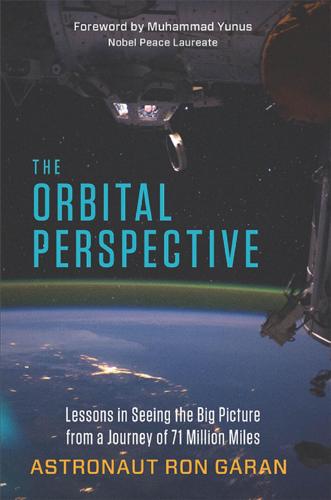
The Orbital Perspective: Lessons in Seeing the Big Picture From a Journey of 71 Million Miles
by
Astronaut Ron Garan
and
Muhammad Yunus
Published 2 Feb 2015
Manna Energy Ltd. installed a large-capacity water purification system that utilizes gravel and sand filters and solar-powered ultraviolet purification, ensuring that all the children are drinking safe water. Engineers Without Borders also has worked with the community to construct open-air kitchens that use high-efficiency cookstoves, reducing wood use and the respiratory illnesses caused by indoor air pollution. These are just a few of the interventions that have improved the orphanage’s ability to care for the children. The first step toward effecting this kind of real change is to believe that real change is possible, and I believe it is possible 8â•… I n t r o d u c t io n because we already have accomplished some things that were once thought impossible.

Getting Better: Why Global Development Is Succeeding--And How We Can Improve the World Even More
by
Charles Kenny
Published 31 Jan 2011
“Trends in Global Income Distribution, 1970–2000, and Scenarios for 2015.” Human Development Report Office Occasional Paper. Djankov, S., and M. Reynal-Querol. 2008. “Poverty and Civil War: Revisiting the Evidence.” CEPR Working Paper DP6980. Donohoe, M., and E. Garner. 2008. “Health Effects of Indoor Air Pollution from Biomass Cooking Stoves.” Medscape Public Health & Prevention: Public Health Perspective. Accessed online at http://www.medscape.com/viewarticle/572069 on November 3, 2008. Doucouliagos, H., and M. Paldam. 2005. “Aid Effectiveness on Growth: A Meta-Study.” University of Aarhus Department of Economics Working Paper 2005–15/6.
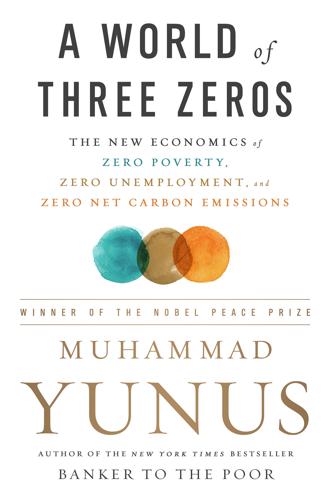
A World of Three Zeros: The New Economics of Zero Poverty, Zero Unemployment, and Zero Carbon Emissions
by
Muhammad Yunus
Published 25 Sep 2017
It can also be timed to an individual user’s due date so that it provides appropriate health care information and advice at the right moments; there are some eighty health messages to be delivered at a rate of about two per week. Coel’s benefits don’t stop there. The bangle is also designed to monitor and test the quality of the air that its female wearer is breathing. In particular, it can detect indoor air pollution, particularly carbon monoxide, which is often generated during cooking with fuels like wood, charcoal, or dung. Millions of women in Bangladesh and other developing countries inhale such dangerous fumes every day, often with dire health consequences for their babies. Coel will provide alerts when this is happening so that women will know it’s time to step outside for fresh air.
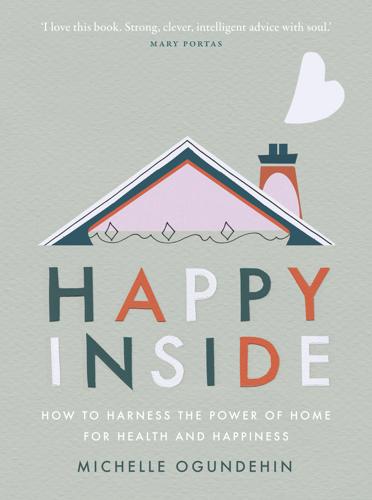
Happy Inside: How to Harness the Power of Home for Health and Happiness
by
Michelle Ogundehin
Published 29 Apr 2020
Should you prefer your toast a little crisper, burnt toast propels those emissions up to a heady 3,000–4,000 micrograms per cubic metre! This is more than 150 times the WHO limits. No wonder we might start to feel a little lethargic if we stay indoors too much, and all we’ve done so far is make breakfast. Other common indoor air pollutants (covered in detail in the next section) include fumes from freshly dry-cleaned clothes and volatile organic compounds (or VOCs – carbon-based solvents that evaporate at room temperature) released by some household paint as it dries, as well as medium-density fibreboard (MDF), new carpets (or the adhesives used to fix them) and some upholstery.

Energy and Civilization: A History
by
Vaclav Smil
Published 11 May 2017
Now as earlier, one must weigh the dismal state of urban environments—aesthetic affronts, air and water pollution, noise, crowding, dismal living conditions in slums—against their often no less objectionable rural counterparts. Common rural environmental burdens include very high concentrations of indoor air pollutants (particularly fine particulate matter) from unvented biomass combustion, inadequate heating in colder climates, unsafe water supplies, poor personal hygiene, dilapidated, overcrowded housing, and minimal or no opportunities to see the children properly educated. Moreover, the drudgery of field labor in the open is seldom preferable even to unskilled industrial work in a factory.
…
Feeding the city: Food consumption and flow of nitrogen, Paris, 1801–1914. Science of the Total Environment 375:48–58. Barles, S., and L. Lestel. 2007. The nitrogen question: Urbanization, industrialization, and river quality in Paris 1830–1939. Journal of Urban History 33:794–812. Barnes, B. R. 2014. Behavioural change, indoor air pollution and child respiratory health in developing countries: A review. International Journal of Environmental Research and Public Health 11:4607–4618. Barro, R. J. 1997. Determinants of Economic Growth: A Cross-Country Empirical Study. Cambridge, MA: MIT Press. Bartosiewicz, L. et al. 1997. Draught Cattle: Their Osteological Identification and History.
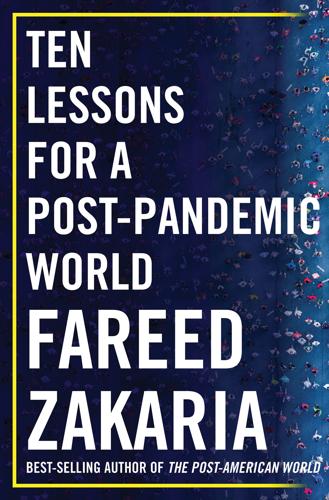
Ten Lessons for a Post-Pandemic World
by
Fareed Zakaria
Published 5 Oct 2020
Average,” Wall Street Journal, December 28, 2011, https://www.wsj.com/articles/SB10001424052970203479104577125151628468014. 133 “If you want to live longer and healthier than the average American”: Stu Loeser, Samantha Levine, Susan Craig, and Alexandra Waldhorn, “Mayor Bloomberg, Deputy Mayor Gibbs, Health Commissioner Farley Announce New Yorkers Living Longer Than Ever, Outpacing National Trend,” Official Website of the City of New York, December 7, 2011, https://www1.nyc.gov/office-of-the-mayor/news/453-11/mayor-bloomberg-deputy-mayor-gibbs-health-commissioner-farley-new-yorkers-living-longer#/4. 134 3% of the earth’s surface: Liu Zhifeng et al., “How Much of the World’s Land Has Been Urbanized, Really? A Hierarchical Framework for Avoiding Confusion,” Landscape Ecology 29 (2014): 763–71. 134 pollution is sometimes worse in rural areas: H. E. S. Mestl, K. Aunan, H. M. Seip et al., “Urban and Rural Exposure to Indoor Air Pollution from Domestic Biomass and Coal Burning Across China,” Science of the Total Environment 377, no. 1 (May 2007): 12–26, https://doi.org/10.1016/j.scitotenv.2007.01.087. 134 reliance on dirty fossil fuels: “Country Living, Dirty Air: Oil & Gas Pollution in Rural America,” Earthworks and Clean Air Taskforce, https://www.scribd.com/document/383729903/Country-Living-Dirty-Air; see also, for example, Liz Ruskin, “Alaska Remote Diesel Generators Win Exemption from Pollution Rule,” Alaska Public Media, September 18, 2019, https://www.alaskapublic.org/2019/09/18/alaska-remote-diesel-generators-win-exemption-from-pollution-rule/. 134 “Cancer Alley”: Tristan Baurick, Lylla Younes, and Joan Meiners, “Welcome to ‘Cancer Alley,’ Where Toxic Air Is About to Get Worse,” ProPublica, October 30, 2019, https://www.propublica.org/article/welcome-to-cancer-alley-where-toxic-air-is-about-to-get-worse. 134 mountains of garbage on New York’s streets: New York City’s infamous problem of garbage on the sidewalk is an artifact of its dense grid plan.
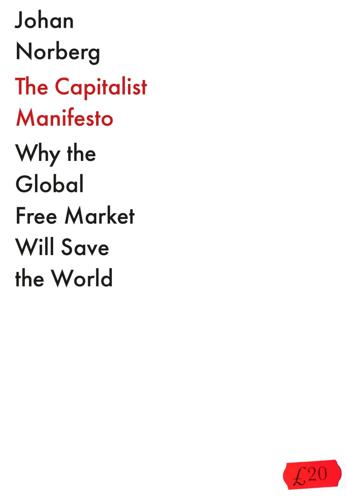
The Capitalist Manifesto
by
Johan Norberg
Published 14 Jun 2023
Globally, from 1990 to 2017, the number of DALYs lost to air pollution has decreased by 49 per cent and to water pollution by 65 per cent.9 Environmental damage to life and health10 One important exception is CO2 emissions, which have continued to increase as more parts of the world have been electrified. However, this electrification has been crucial in reducing the number of people who cook with biofuels. Between 1990 and 2019, the number of deaths from indoor air pollution decreased by more than two million. The death rate has dropped by two-thirds, one of the biggest health triumphs of recent decades.11 Yet biodiversity is under increasing threat as humans encroach on the wilderness, mainly to turn it into agricultural land. It is often said that we are in the midst of the sixth mass extinction, this time a man-made one.

Golden Holocaust: Origins of the Cigarette Catastrophe and the Case for Abolition
by
Robert N. Proctor
Published 28 Feb 2012
Sterling, for example, a professor of applied mathematics at Washington University in St. Louis, testified before this same House committee, opining that the conclusions drawn by the Surgeon General about smoking and cancer were “probably invalid.” In the 1960s and early 1970s Sterling received about $4 million to conduct research for the industry, mainly on indoor air pollution but also to develop statistical methods useful for challenging the smoking–cancer link. As late as the 1990s Sterling was ridiculing calculations of hundreds of thousands of U.S. deaths from smoking as “exaggerated propaganda” bordering on “the ludicrous”; he also accused health authorities of “resorting to misinformation to encourage people to stop smoking.”
…
Philip Morris distinguishes screamers “soft” and “hard”: “soft” screamers are simply people who request being removed from such lists, whereas “hard” screamers (also known as “mass mob screamers”) include direct mail targets who are underage or otherwise troublesome from a legal point of view. sick building syndrome (SBS) Concept created by Gray Robertson of Healthy Buildings International—a tobacco industry front—to distract from the hazards of secondhand smoke in indoor spaces. The idea was that buildings suffering from indoor air pollution (from carpet fumes and the like) could be healed by proper ventilation—rather than bans on smoking. SBS becomes a centerpiece of tobacco industry effort to minimize and/or deny the reality of harms caused by breathing indoor smoke. statistics Generally suspect, or “mere.” Invectives against statistics appear by the thousands in tobacco industry propaganda.
…
A technique to lower machine-measured tar and nicotine deliveries by cutting tiny slits in the mouth end of a cigarette. Ventilation slits were strategically placed so that while smoking robots would record lower yields, smokers could cover them to obtain their requisite dosages (“self-titration”). “Ventilation” was also a term used to distract from cigarettes as a cause of indoor air pollution: rooms had not “too much smoke” but rather “too little ventilation.” virile market Term for military and/or macho market targets. “Virile females” included female soldiers but also “NASCAR girls.” weaning Big Tobacco term for withdrawal from nicotine—smoking cessation—and something to be feared.

Unhealthy societies: the afflictions of inequality
by
Richard G. Wilkinson
Published 19 Nov 1996
For countries on the horizontal part of the curves in figure 3.1 (which becomes more horizontal in the light of the inadequate quality adjustments), the onus for explaining the upward shift of the life expectancy curve is on the qualitative improvements in living standards which take place over time. If one were to suggest ways in which qualitative change might improve health, one might point to cleaner central heating, which avoids the problems of indoor air pollution and fire hazards associated with open fires; 42 The health of societies freezers which enable people to eat food with less bacterial contamination; a whole host of developments (including washing machines, electric kettles and disposable nappies) which have made baby and childcare not only easier but also more hygienic and safe; lead-free petrol which reduces environmental pollution; increases in car safety, which have reduced road deaths despite increased car ownership; and the wider provision of phones, which enables families and friends to overcome some of the social dislocation caused by geographical separation (relevant to the powerful influence of social support on health).

Randomistas: How Radical Researchers Changed Our World
by
Andrew Leigh
Published 14 Sep 2018
Researchers in the Netherlands randomly assigned primary school students to a sports program run by one of the nation’s top soccer teams, to see if it helped them perform better in maths and reading (it didn’t).16 In Washington DC, researchers randomly offered a Washington Post subscription to households to see how it affected their political views (it made them more likely to vote Democrat).17 A French experiment found that winning a spot in a boarding school boosted test scores for disadvantaged students.18 A team of economists used a randomised trial in India to test whether better cooking stoves would improve health by reducing indoor air pollution (the effect was temporary, lasting only a year or so).19 In Ethiopia, a randomised trial tested whether getting a job in a sweatshop improved people’s lives (most quit within a few months).20 In Oregon, trials have compared whether delinquent youths do better in foster care or group care (foster care seems to be better, particularly for girls).21 Randomised trials are in your life, whether you like it or not.

Ten Technologies to Save the Planet: Energy Options for a Low-Carbon Future
by
Chris Goodall
Published 1 Jan 2010
The absence of respiration (the return of water vapor from trees to the atmosphere) increases the threat of drought. Equally importantly, Flanagan’s stoves burn extremely cleanly, improving the air quality in homes. The World Health Organization reports that a million and a half people die every year from the effects of indoor air pollution, which is mostly caused by smoke from open fires in poorer communities. Like the other experimental scientists working in the field, Flanagan isn’t sure why biochar adds to the soil’s fertility. When I chatted to him by e-mail, he described this puzzle as the “million-dollar question.” The fertilization effects of charcoal are clearest in the tropics, but many researchers are now seeing similar improvements in the soils of temperate lands.

Ultimate Sales Machine
by
Chet Holmes
Published 20 Jun 2007
We were wondering if there was anything we could do to help with that story." Often at that point, you'll be asked to resend your press release. Or you'll be bmshed off, but the following month, when you call about the five million dust mites in everyone's living room, the editor will start to remember: you're the guy who knows about indoor air pollution. If a story comes up along those lines, guess who they are going to call first? Also, editors are just like anyone else. They respect someone who continues to call them with story ideas on a regular basis. Earlier I mentioned American Art Resources (AAR), the people who sell art to hospitals.

Not the End of the World
by
Hannah Ritchie
Published 9 Jan 2024
Instead, researchers estimate premature deaths from measurements of pollutants in the air, and our understanding of how this increases our risk of deadly diseases. Researchers don’t agree on the exact number. But they do agree that it’s tragically high – in the order of millions. The World Health Organization estimates that air pollution kills 7 million people every year: 4.2 million from outdoor air pollution, and 3.8 million from indoor air pollution from burning wood and charcoal. The world’s other big health institute, the Institute for Health Metrics and Evaluation (IHME), gives a similar number: 6.7 million. Some scientists think this number could be even bigger: some of the most recent and widely cited studies estimate that at least 9 million people die every year from the air they breathe.27, 28 To put these numbers into context, this is similar to the death toll from smoking: around 8 million.29 It’s six or seven times higher than the number of people that die in road accidents: 1.3 million.

Enlightenment Now: The Case for Reason, Science, Humanism, and Progress
by
Steven Pinker
Published 13 Feb 2018
Our World in Data. https://ourworldindata.org/human-rights/. Roser, M. 2016j. Hunger and undernourishment. Our World in Data. https://ourworldindata.org/hunger-and-undernourishment/. Roser, M. 2016k. Income inequality. Our World in Data. https://ourworldindata.org/income-inequality/. Roser, M. 2016l. Indoor air pollution. Our World in Data. https://ourworldindata.org/indoor-air-pollution/. Roser, M. 2016m. Land use in agriculture. Our World in Data. https://ourworldindata.org/land-use-in-agriculture/. Roser, M. 2016n. Life expectancy. Our World in Data. https://ourworldindata.org/life-expectancy/. Roser, M. 2016o. Light. Our World in Data. https://ourworldindata.org/light/.

The new village green: living light, living local, living large
by
Stephen Morris
Published 1 Sep 2007
Fifty-one percent 168 chapter 7 : Whole Earth Catalog of all American homes have one of these time- and labor-saving devices, yet it surprises many to learn that they’re the most toxic appliance in the modern home. Over the course of approximately 30 experiments, researchers at the EPA and the University of Texas recently documented the dishwasher’s role as a leading cause of indoor air pollution. Pollutants released by dishwashers include the chlorine added to both public water supplies and dishwasher detergents, volatile organic compounds like chloroform, radioactive radon naturally present in some water sources, and other volatile contaminants that have worked their way into public water supplies.
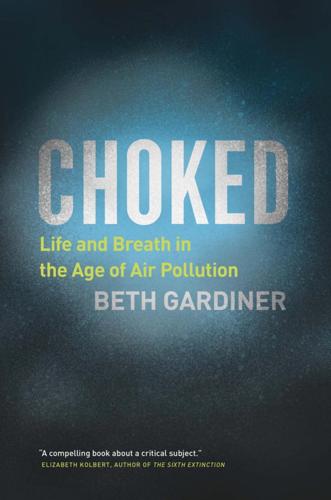
Choked: Life and Breath in the Age of Air Pollution
by
Beth Gardiner
Published 18 Apr 2019
More than 40 percent of humanity—33 billion people—lives in households that cook this way.1 As economic growth has lifted many from the direst poverty, and as villagers everywhere have migrated to cities, that percentage has declined. But because the global population has been rising at the same time, the absolute number of people living with the smoke of open cooking fires remains stubbornly high. Scientists used to call this “indoor air pollution,” to distinguish it from the more familiar “outdoor” sources. But the jargon has recently changed, reflecting a new realization: that the two problems are deeply intertwined, because the smoke of cooking fires floats from kitchens and adds to an entire region’s, or a nation’s, dirty air. That the problem can’t be solved just by venting smoke from homes, and that the cooks and their families don’t escape it when they step outside—it follows them through their neighborhoods, through their days and their lives.
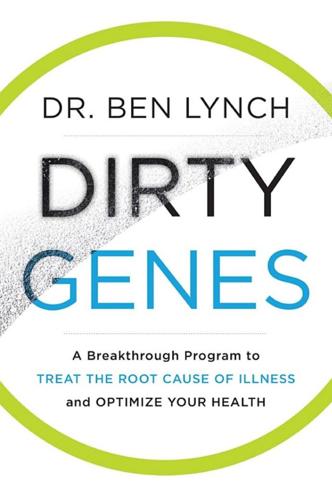
Dirty Genes: A Breakthrough Program to Treat the Root Cause of Illness and Optimize Your Health
by
Ben Lynch Nd.
Published 30 Jan 2018
She was a teacher, so eventually I had her call in inspectors to evaluate her school. Turns out the building was so contaminated by mold that they had to demolish it! I could have just treated her congestion, but as it turned out, I helped thousands of people. Please, check for mold—and also for a number of other common indoor air pollutants, including radon, carbon monoxide, dust mites, and formaldehyde (to name just a few). A good starting point is often an at-home mold test kit, available at your local hardware store and online (see below for one recommendation). If this doesn’t work, call in the professionals to make an evaluation.

On the Grand Trunk Road: A Journey Into South Asia
by
Steve Coll
Published 29 Mar 2009
They rise at five in the morning in a clatter of gossip and banging pots, cook breakfast, feed and dress the children, milk the cows, fetch water from drying springs, grind grain, work the fields, cook lunch, grind more grain, march off to gather firewood, clean the house, work the fields again, cook dinner, wash the dishes, and put the children to bed. The women manage the grain stocks and the harvests. They spend long hours squatting on the straw mats in their kitchens, which are filled with smoke from cooking fires. “Indoor air pollution,” the environmental scientists in New Delhi call it, as if it were a symptom of faulty valves. The women usually fall asleep around eleven at night and rise again at dawn to do it all again, seven days a week. Their husbands help them out by getting them pregnant with great frequency. The cycle plays out like a game of Russian roulette.

What We Owe the Future: A Million-Year View
by
William MacAskill
Published 31 Aug 2022
Clark et al. 2016, Figure 6. 45. See whatweowethefuture.com/notes. 46. Our World in Data 2020a, based on Lelieveld et al. 2019. This only includes deaths from outdoor air pollution. An additional 1.6 million (Stanaway et al. 2018) to 3.8 million (WHO 2021) excess deaths per year are due to indoor air pollution, much of which is caused by lack of access to electricity and clean fuels for cooking, heating, and lighting (H. Ritchie and Roser 2019). More than 2.5 billion people are able to cook only by burning coal, kerosene, charcoal, wood, dung, or crop waste using inefficient and unsafe technology such as open fires (WHO 2021). 47.

The White Man's Burden: Why the West's Efforts to Aid the Rest Have Done So Much Ill and So Little Good
by
William Easterly
Published 1 Mar 2006
During a recent trip to Africa, I saw a young girl cooking in an unventilated hut all day long, in smoke so thick I could not stand to stay in the hut for more than a few seconds. This scene is common in homes throughout Africa, multiplying many times children’s chances of dying from respiratory infections. The World Health Organization estimates that indoor air pollution in a smoky hut exceeds by a factor of sixty the European Union’s standard maximum for outdoor air pollution.57 The sufferings from acute respiratory infections are hard to convey to people in rich societies, who no longer experience them. The lungs fill with pus, some of which the patient coughs out.
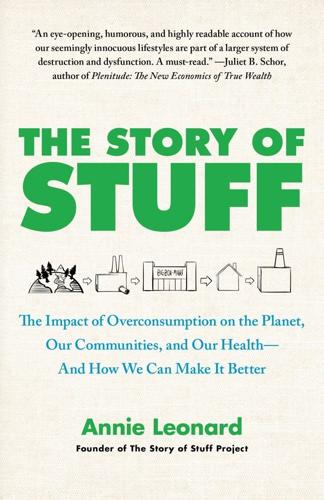
The Story of Stuff: The Impact of Overconsumption on the Planet, Our Communities, and Our Health-And How We Can Make It Better
by
Annie Leonard
Published 22 Feb 2011
Leading scientists around the world have identified 350 ppm as the maximum level that the atmosphere can contain for the planet to remain as we know it.6 Toxic industrial and agricultural chemicals now show up in every body tested anywhere in the world, including in newborn babies.7 Source: W. Steffen at al, Global Change and the Earth System: A Planet Under Pressure, 2005. Indoor air pollution kills 1.6 million people per year, with outdoor air pollution taking another 800,000 lives each year.8 About one-fifth of the world’s population—more than 1.2 billion people—experience water scarcity, and this resource is becoming increasingly scarce.9 Global income inequality is staggering.

Vertical: The City From Satellites to Bunkers
by
Stephen Graham
Published 8 Nov 2016
‘The risks from air pollution are now far greater than previously thought or understood, particularly for heart disease and strokes’, argued the WHO’s Maria Neira. ‘Few risks have a greater impact on global health today than air pollution; the evidence signals the need for concerted action to clean up the air we all breathe.’25 The WHO estimated that 4.3 million of total deaths were due to indoor air pollution (mainly from lit stoves), and 3.7 million were due to bad external air tainted by fossil fuel combustion. The most lethal aspects of the latter involves sulphur and nitrogen dioxide (major causes of chronic respiratory and cardiovascular ailments); poisonous ozone (formed when sunlight reacts with pollutants); carbon monoxide (which prevents the blood from transporting oxygen properly); various forms of airborne particulate matter (from diesel engines and coal fired power stations); carcinogens such as benzene and lead; and airborne dust created by construction work.
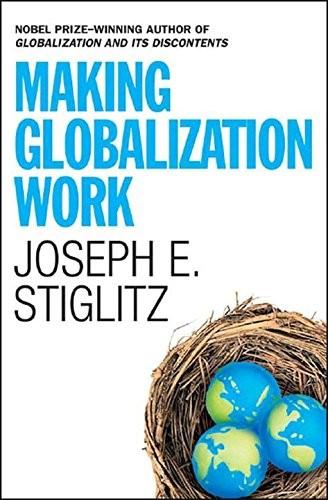
Making Globalization Work
by
Joseph E. Stiglitz
Published 16 Sep 2006
Now it is also being viewed as a way up, enhancing income even for those who remain in the rural sector. Education can be used to promote health and the environment as well as to impart technical skills. Students can learn in school the dangers of locating latrines uphill from their source of drinking water, or the dangers of indoor air pollution—the choking smoke in huts without ventilation—and what can be done about it. With education, a broad approach is important. Too often, international development institutions such as the World Bank focused narrowly on primary education. This was understandable: the returns are high, and many countries were spending a disproportionate part of their education budgets on university education for children of the elite.
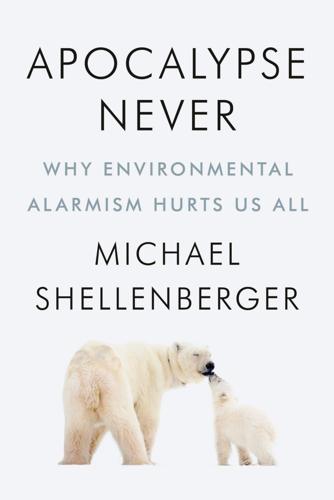
Apocalypse Never: Why Environmental Alarmism Hurts Us All
by
Michael Shellenberger
Published 28 Jun 2020
Globally, the history of human evolution and development is one of converting ever-larger amounts of energy into wealth and power in ways that allow human societies to grow more complex. 6. Energy Density Matters When you interview women who are small farmers about what it’s like to cook with wood you might assume they would complain about the toxic smoke they must breathe. After all, such indoor air pollution shortens the lives of four million people per year, according to the World Health Organization.61 But, around the world, what they complain about more often is how much time it takes to chop wood, haul wood, start fires, and maintain them. After Suparti moved to the city, she was able to use liquefied petroleum gas as cooking fuel instead of rice husks.
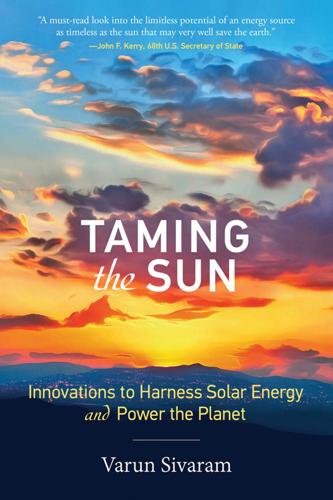
Taming the Sun: Innovations to Harness Solar Energy and Power the Planet
by
Varun Sivaram
Published 2 Mar 2018
Contrary to received wisdom, people at the bottom of the pyramid are not necessarily too poor to pay for energy. In fact, those without access to electricity spend about $27 billion every year just on lighting and mobile phone charging. But their current sources of energy have clear drawbacks. In addition to being expensive, light from kerosene lamps or candles is poor quality and causes deadly indoor air pollution. And phone charging can often entail arduous treks, like Patrick’s, to a communal charging station miles away. Many such customers are able and willing to pay for electricity access at home.13 Surprisingly, they are willing to pay much more per unit of electricity than customers in a developed country.

Open: The Story of Human Progress
by
Johan Norberg
Published 14 Sep 2020
And even though war fatalities and homicide rates have halved in the last three decades, there is always a war and a serial killer somewhere in the world, and then that will top the news cycle everywhere and give us the impression that it’s becoming more frequent. The problem is not fake news, it’s real news without context or reflection. Ironically, this thirst for drama also makes us blind to some of the worst ongoing tragedies on the planet, like chronic undernourishment or deaths from indoor air pollution, because they are not sudden and explosive, they are just there all the time in the background. And then came social media, which further exposes us to new threats every second. As someone put it (I don’t remember who, I saw it somewhere on social media), human horrors are not new but the mobile phone camera is.
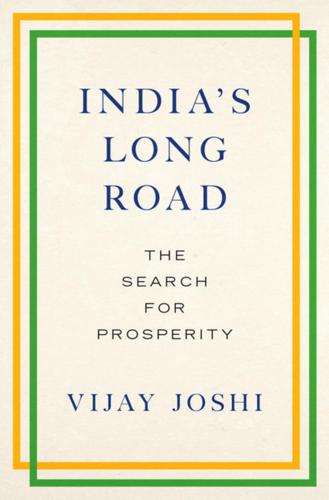
India's Long Road
by
Vijay Joshi
Published 21 Feb 2017
See Tables 3.16 and 3.17 of Planning Commission (2013a). 30. See Yale Centre for Environmental Law & Policy (2014). 31. See World Health Organization (2014). Delhi’s measured PM2.5 levels are 15 times the WHO guideline. PM2.5 pollution can lead to life-threatening heart and lung conditions. 32. Indoor air pollution due to the burning of solid fuels for cooking, especially prevalent in India’s rural areas, is also enormously harmful and accounts for a million premature deaths a year in the country. 33. See Greenstone and Jack (2015), Figures 1 and 2, and the sources therein, for the much of the data referred to in this paragraph. 34.

The Rational Optimist: How Prosperity Evolves
by
Matt Ridley
Published 17 May 2010
But even if you accept these guesses, the WHO’s own figures showed that climate change was dwarfed as a cause of death by iron deficiency, cholesterol, unsafe sex, tobacco, traffic accidents and other things, not to mention ‘ordinary’ diarrhoea and malaria. Even obesity, according to the same report, was killing more than twice as many people as climate change. Nor was any attempt made to estimate the number of lives saved by carbon emissions – by the provision of electric power to a village where people suffer from ill health due to indoor air pollution from cooking over open fires, say, or the deaths from malnutrition prevented by the higher productivity of agriculture using fertiliser made from natural gas. In 2009 Kofi Annan’s Global Humanitarian Forum doubled the number of climate deaths to 315,000 a year, but only by ignoring these points, arbitrarily doubling the diarrhoea deaths caused by climate, and adding in ludicrous assumptions about how climate change was responsible for ‘inter-clan fighting in Somalia’, Hurricane Katrina and other disasters.

Good Economics for Hard Times: Better Answers to Our Biggest Problems
by
Abhijit V. Banerjee
and
Esther Duflo
Published 12 Nov 2019
But there is also a lack of awareness that air pollution is a health issue. A recent Lancet study found that a large part of the deaths due to outdoor air pollution can be attributed to the burning of biomass (leaves, wood, etc.).35 But a significant part of this biomass is burnt on indoor stoves, which also generate a tremendous amount of indoor air pollution. It would therefore seem there would be a strong private demand for better cooking devices, which would improve both indoor and outdoor air. But there appears to be no such demand. Study after study finds that the demand for cleaner stoves is very low.36 Even when an NGO distributed cleaner stoves for free, people were not interested enough to get them fixed when they broke.37 Low demand for clean air may come from a failure of many of the poorest households to connect clean air to a healthy, happy, and productive life.
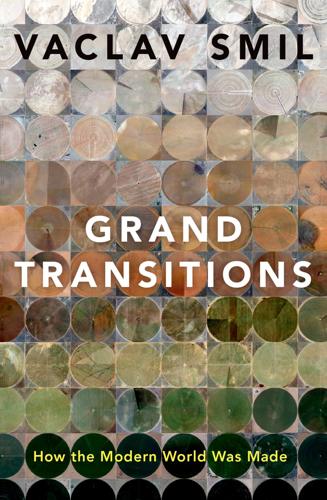
Grand Transitions: How the Modern World Was Made
by
Vaclav Smil
Published 2 Mar 2021
Reliance on inefficiently used biomass fuels (wood, charcoal, straw, dried dung) as the only sources of heat was the most obvious universal feature of this stagnation. Combustion of these fuels was done in open fires or in inefficient fireplaces and simple stoves, wasting typically more than 90% of energy and creating high levels of indoor air pollution. This pollution keeps on affecting more than two billion people in low-income countries that still rely on such arrangements for cooking (WHO 2018b). Use of charcoal (nearly pure carbon and hence a smokeless fuel more suitable for indoor uses) had greatly lessened these exposures but its higher cost limited its use.

The Climate Book: The Facts and the Solutions
by
Greta Thunberg
Published 14 Feb 2023
Stopping the burning of fossil fuels for energy is a critical step that yields enormous, immediate air-quality benefits as up to one in five of all premature deaths stem from fossil-fuel-related pollution. Stopping the burning of biofuels for daily cooking (and sometimes heating) by bringing the world’s poorest people access to modern, efficient energy provides outsized health benefits by improving both outdoor and indoor air quality. Indoor air pollution is estimated to kill roughly 3.2 million people prematurely each year, especially women and children who are most often exposed to kitchen smoke. Similarly, stopping the burning of agricultural waste and instead ploughing it under reduces air pollution and returns vital nutrients to the soil.
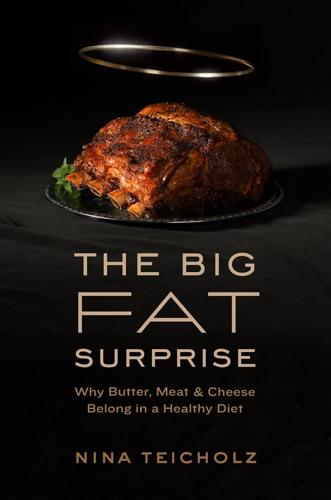
The Big Fat Surprise: Why Butter, Meat and Cheese Belong in a Healthy Diet
by
Nina Teicholz
Published 12 May 2014
Zhang, Quing, Ahmed S. M. Saleh, Jing Chen, and Qun Shen. “Chemical Alterations Taken Place During Deep-Fat Frying Based on Certain Reaction Products: A Review.” Chemistry and Physics of Lipids 165, no. 6 (September 2012): 662–681. Zhong, Lijie, Mark S. Goldberg, Yu-Tang Gao, and Fan Jin. “Lung Cancer and Indoor Air Pollution Arising from Chinese-Style Cooking among Nonsmoking Women Living in Shanghai, China.” Epidemiology 10, no. 5 (September 1999): 488–494. Zhong, Lijie, Mark S. Goldberg, Marie-Élise Parent, and James A. Hanley. “Risk of Developing Lung Cancer in Relation to Exposure to Fumes from Chinese-Style Cooking.”